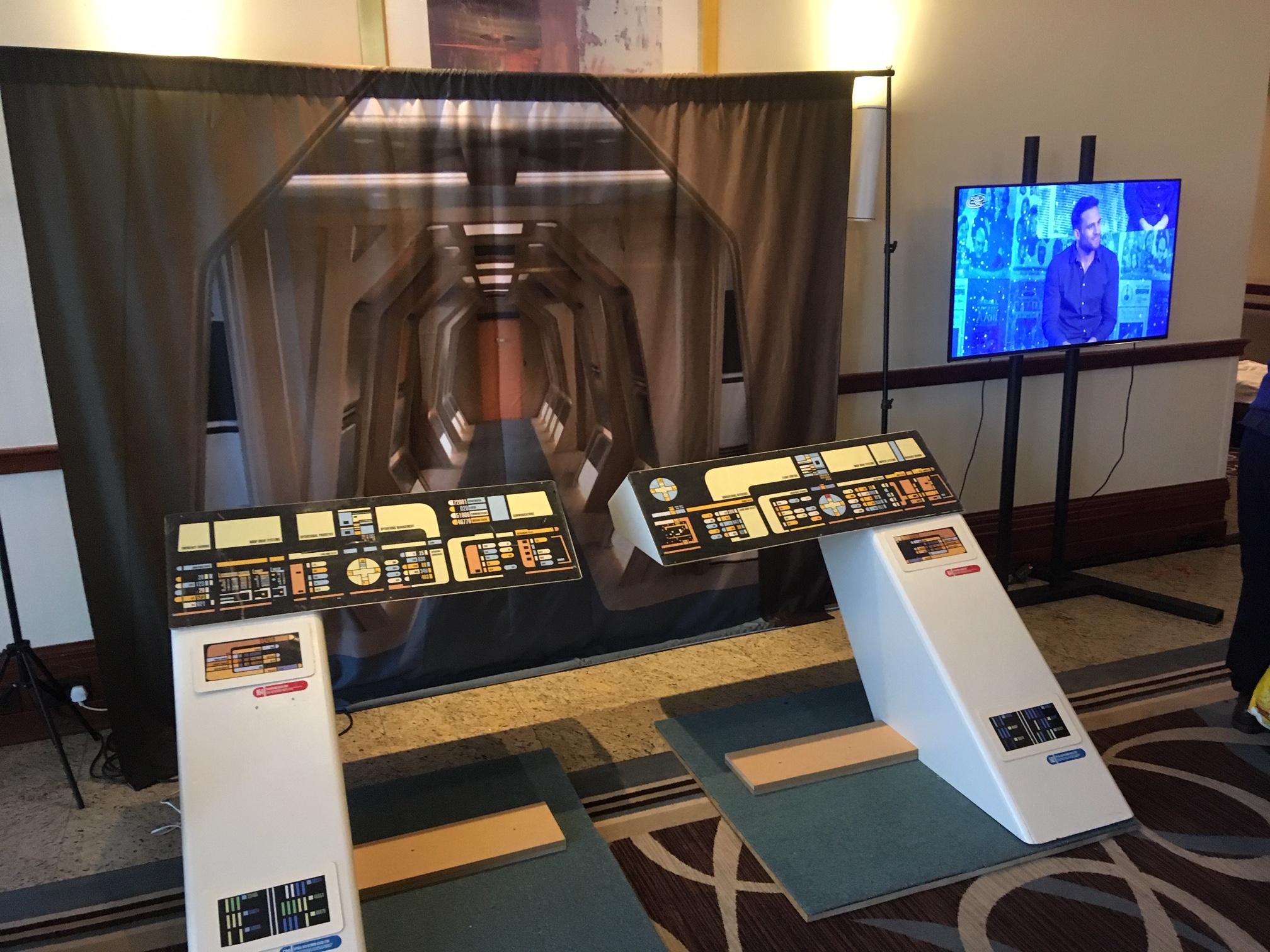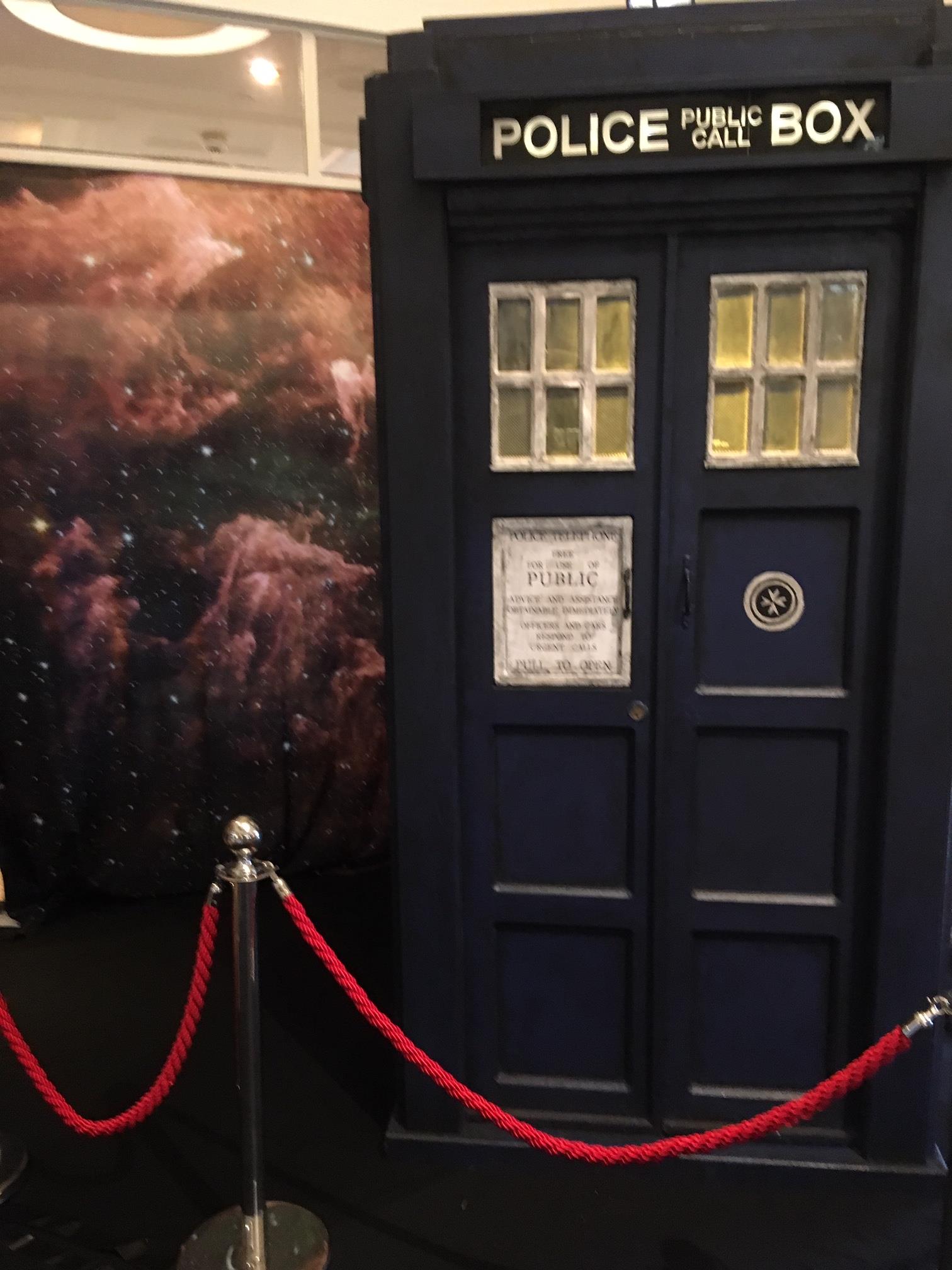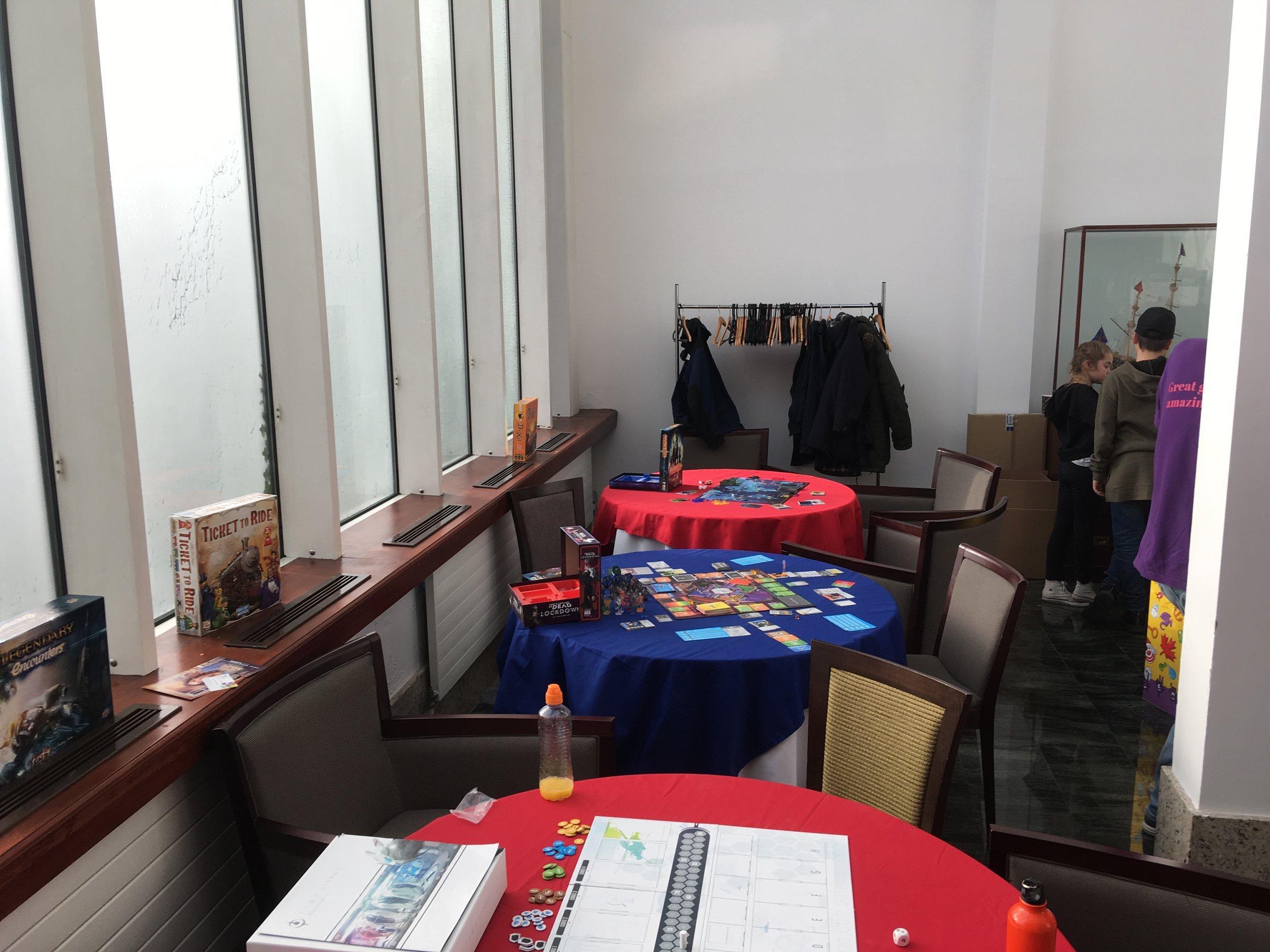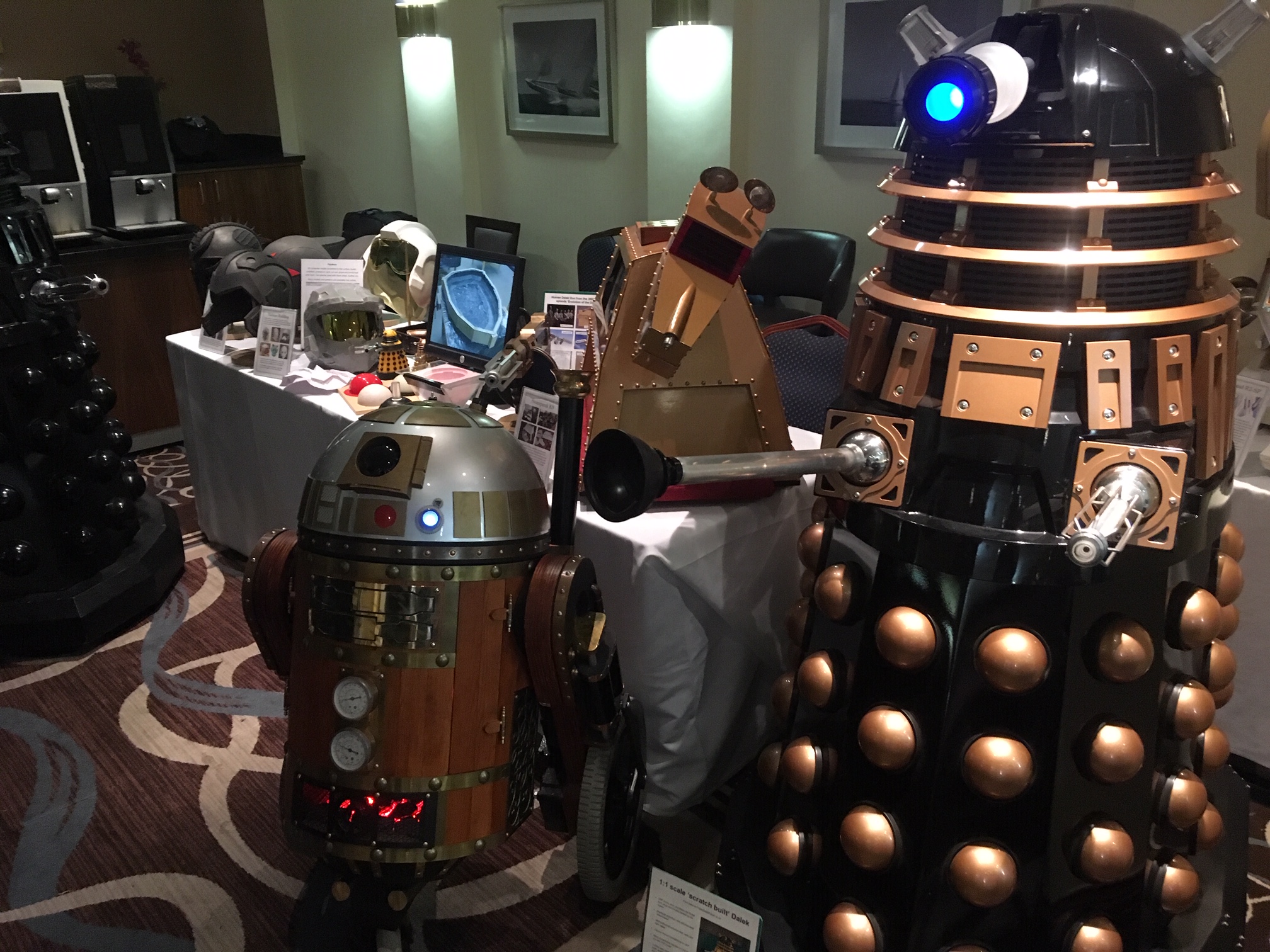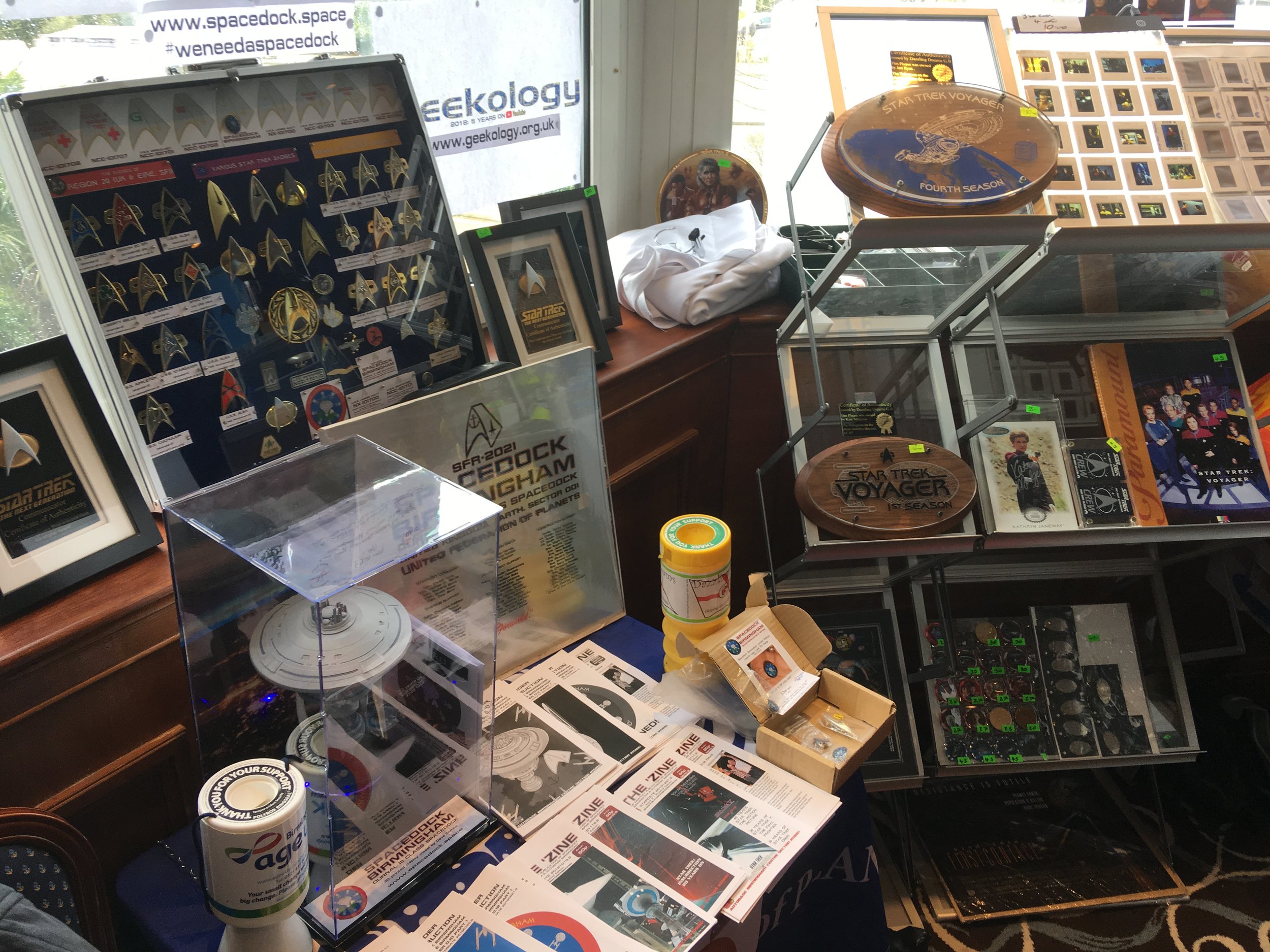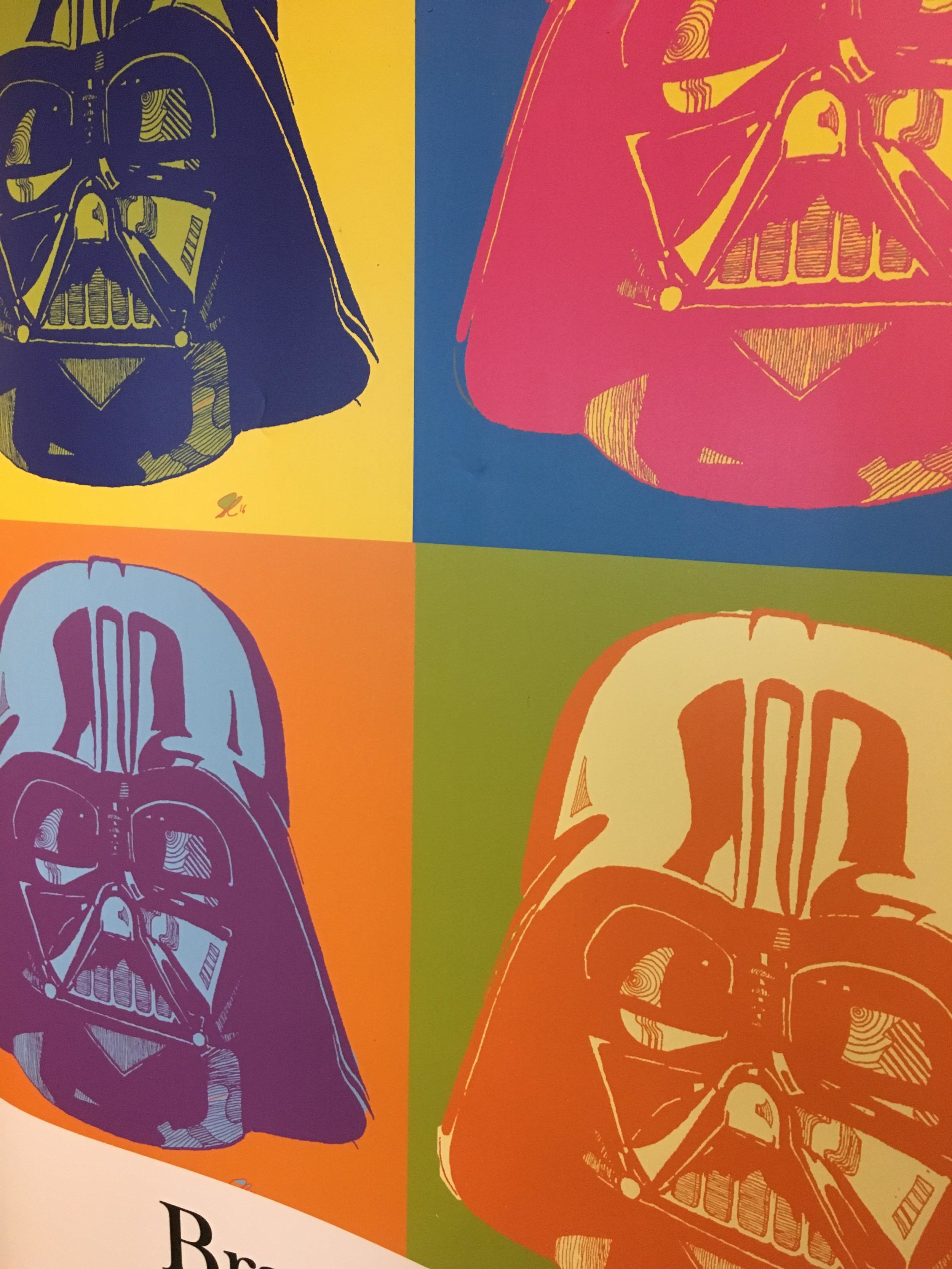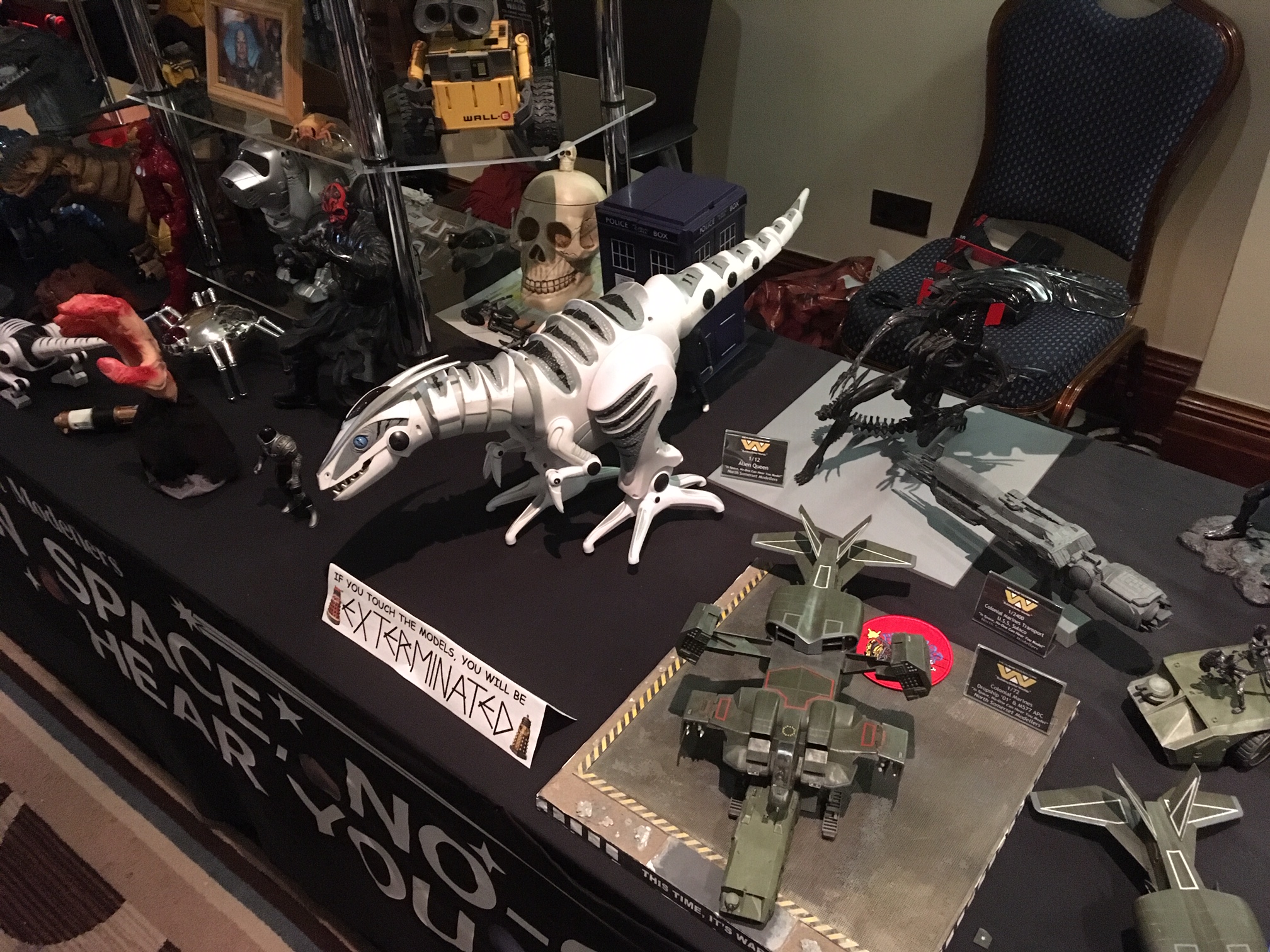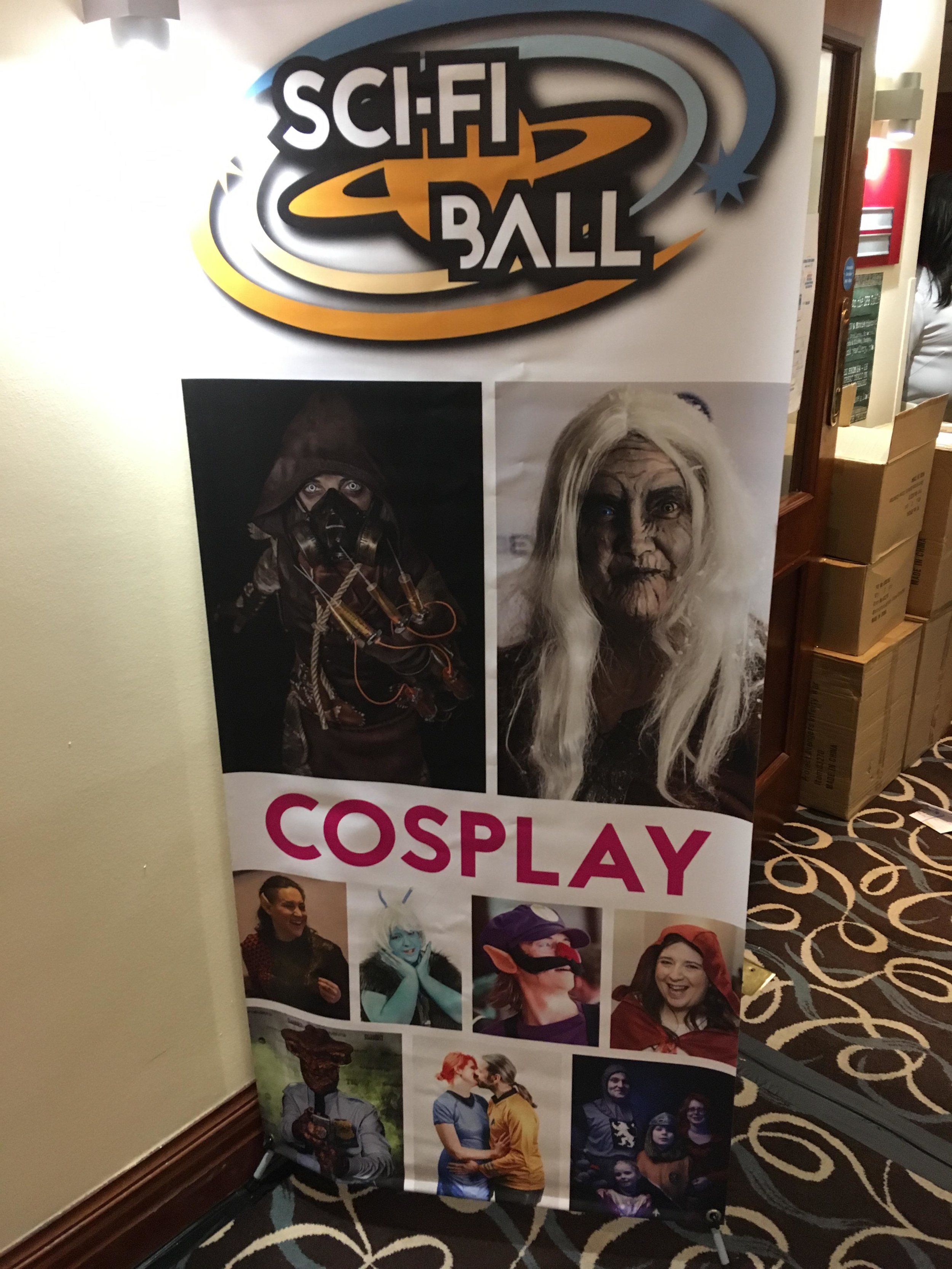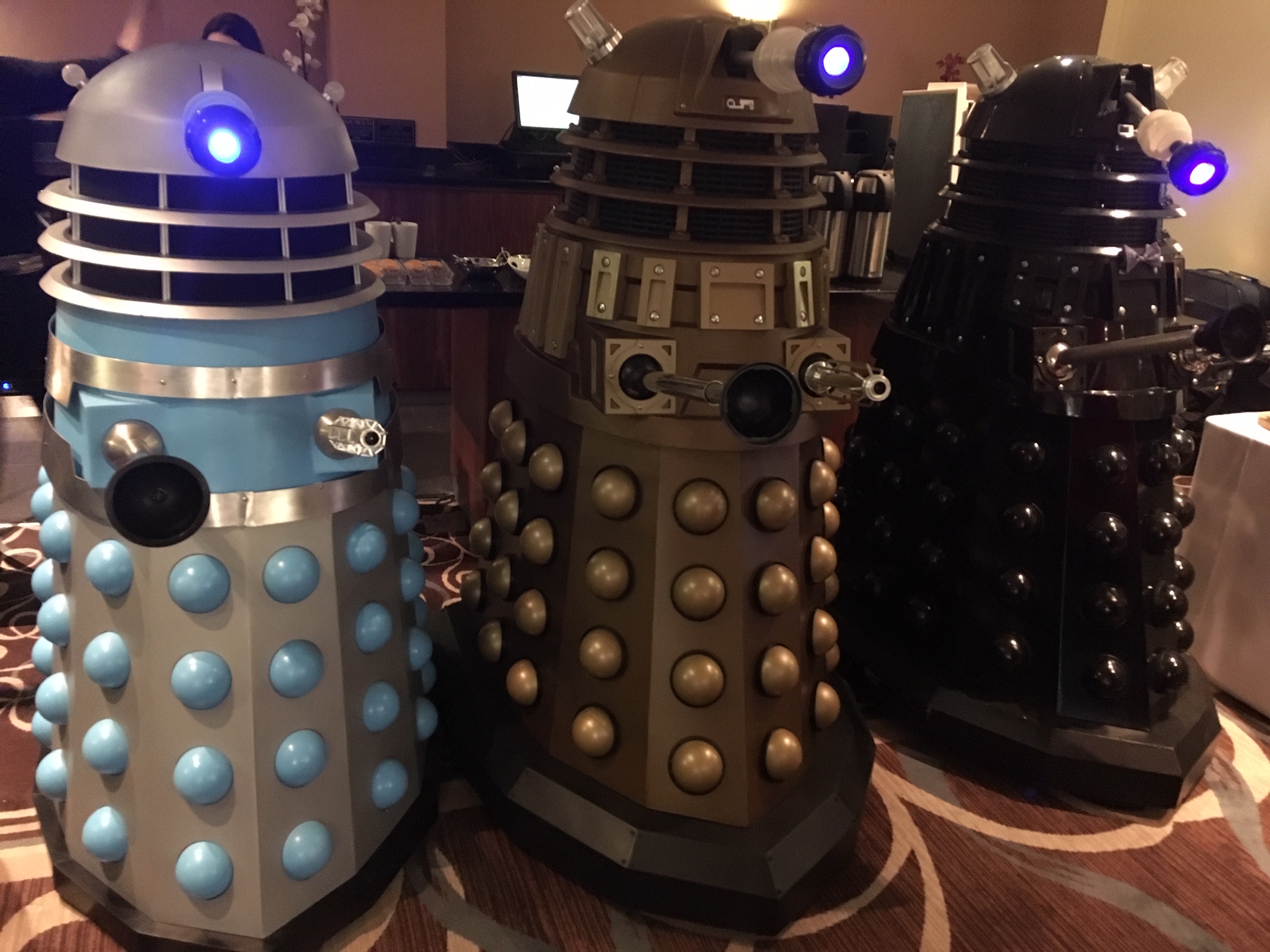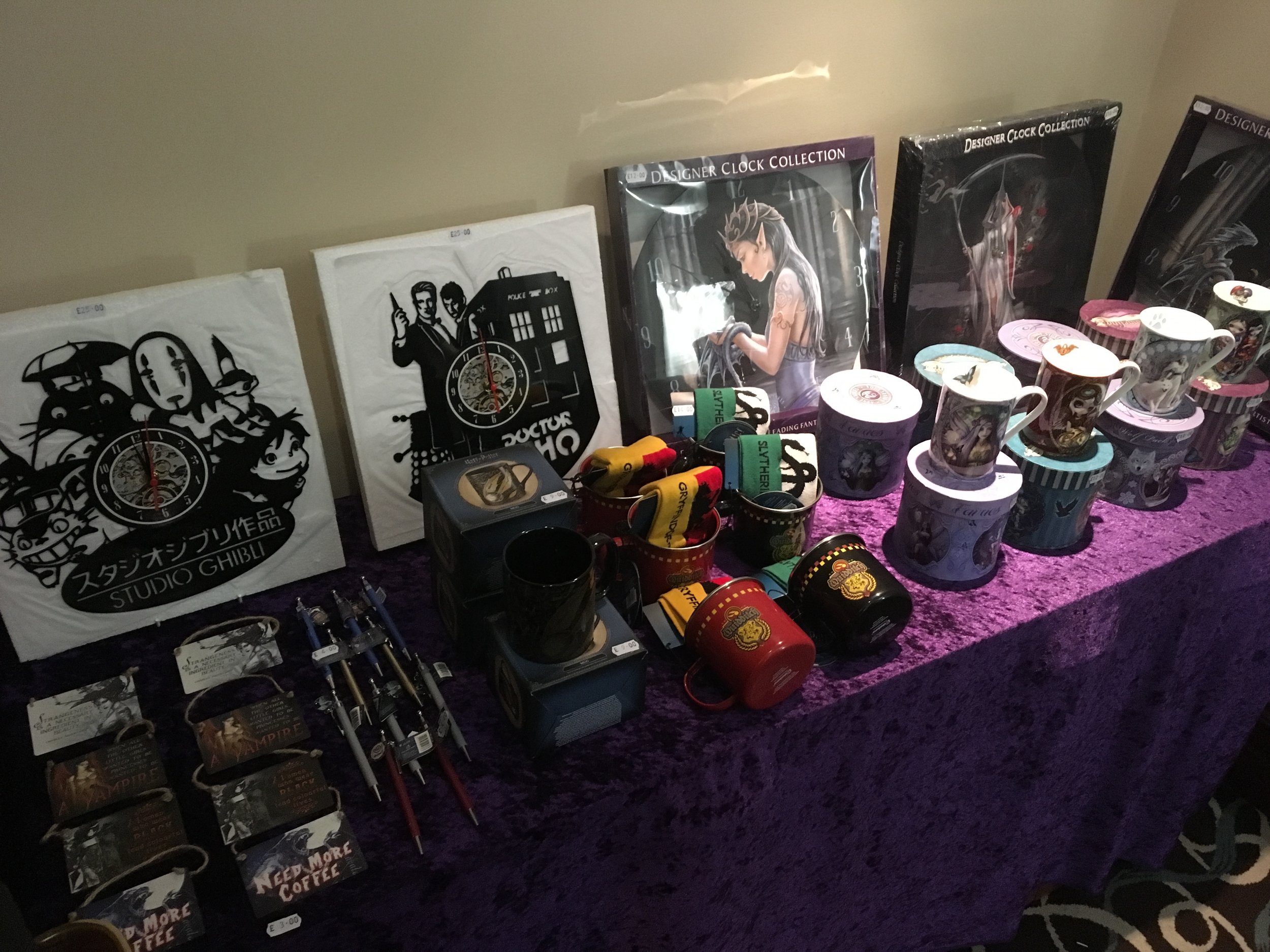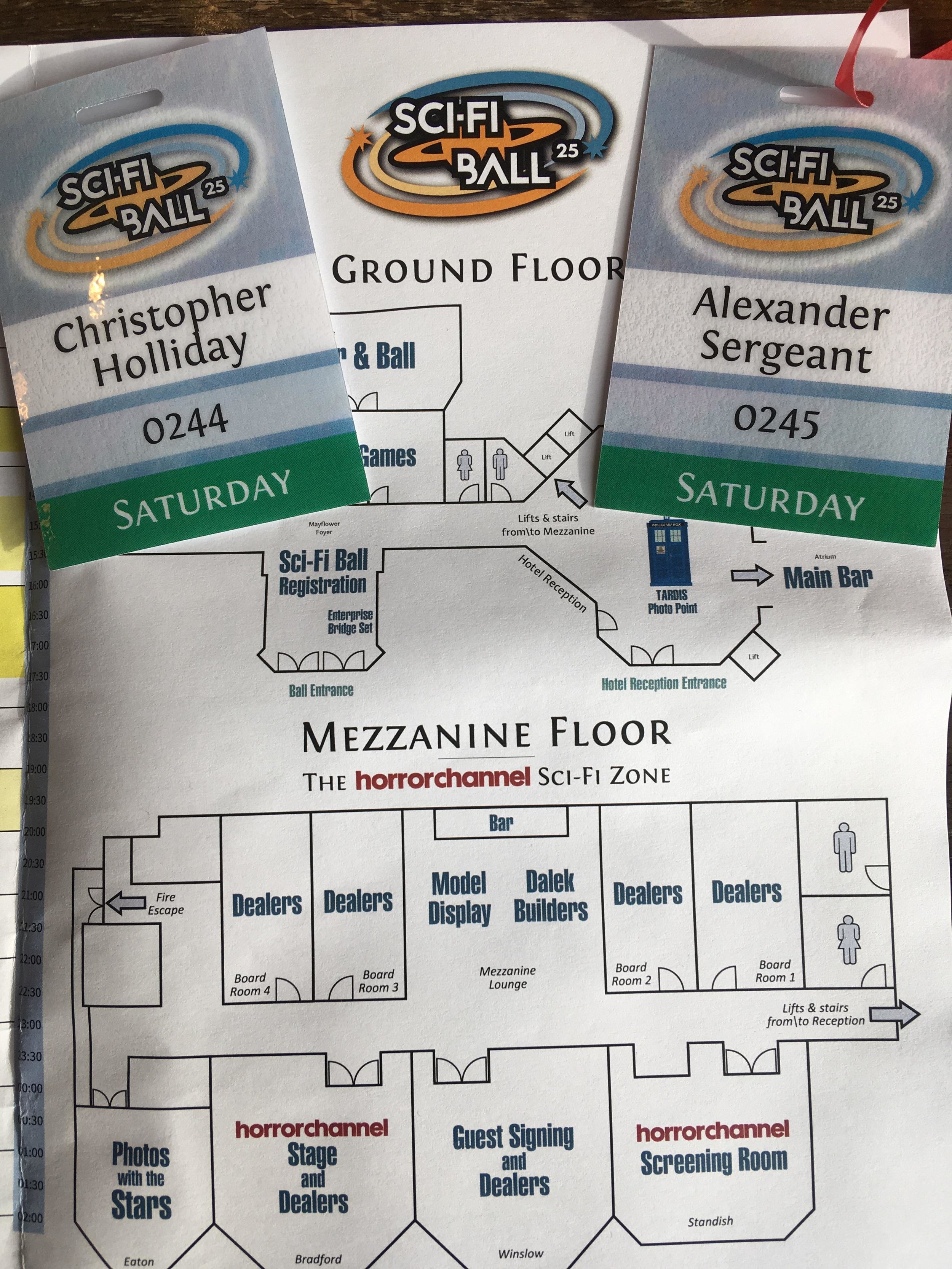Review: Sci-Fi Ball 25
Since its launch back in 1994, the annual Sci-Fi Ball has become a highlight on the UK’s convention circuit, establishing itself as one of the south coast’s most high-profile and bustling events (see right). Now in its 25th year and still going strong, this annual non-for-profit celebration (all funds are donated to Teenage Cancer Trust) of science-fiction across film, television, gaming and beyond attracts a roster of industry dignitary from the genre’s past, present and final frontier. Guests this year included Dino Fetscher and Lucy Carless (stars of Channel 4’s Humans [Sam Vincent & Jonathan Brackley, 2015]), Andrew-Lee Potts (who played Connor Temple in ITV’s Primeval [Adrian Hodges & Tim Haines, 2007-2011]), Robert Duncan McNeill (actor on Star Trek: Voyager [Rick Berman, Michael Piller & Jeri Taylor, 1995-2001] and producer of Marvel’s television series Gifted [Matt Nix, 2017-]), Sean Pertwee (star of Gotham [Bruno Heller, 2014-]), and Terry Molloy (Sci-Fi Ball stalwart, and Davros from BBC’s Doctor Who [1963-1989; 1996; 2005-). These stars took part in informal Q&As across the event’s three days (which ran Friday 8th February-Sunday 10th February), providing opportunities for fans to get to know their screen idols, to dress up as their favourite sci-fi and fantasy characters, and to enjoy what was a welcome forum for a devoted community to express itself in an often relaxed, free-form format. These stars-of-the-industry talks formed the backdrop for a broader celebration of science-fiction through the expression of crafts and arts found across the conventions gaming rooms, trading rooms, themed zones and exhibitions (Fig. 1).
To begin with arguably the main attraction – the fans themselves – the Sci-Fi Ball was perhaps most striking for the somewhat paradoxical relationship between the supposedly ‘official’ discourse of what science fiction fandom consists (manifested through the glamorous mainstream through hi-vis LED lighting and an iconography of space, rockets and technology), and the ‘unofficial’ discourse that marked the convention as a community event. The intimate atmosphere afforded through the rooms, halls and corridors of Southampton’s Grand Harbour Hotel became the backdrop for a set of stalls and exhibitions filled by collectors, artists and writers that seemed a celebration not of the spectacular but of the homemade world of arts and crafts. For example, in one room members of the executive community of the North Somerset Modelling Society (NSMS) proudly displayed their favourite samples from their work as collectors and model-makers. These included a particularly impressive replica of the Nostromo Refinery from Alien (Ridley Scott, 1979) (Fig. 2), assembled over years in a garage and built entirely through circuit boards and sprue (unused pieces of modelling kits). Elsewhere, traders selling their wares - from artwork to self-published novels - highlighted how much of science-fiction media spills out beyond the remit of texts towards artefacts, jewellery, clothing and toys.
This quite literal objectification of the science-fiction genre suggests a correlation between the contemporary fandom and academic discourses on animation. Recent work within Animation Studies conducted by individuals like Rachel Moseley (2016), Caroline Ruddell and Paul Ward (2019) have shown the productive results that comes from considering animation not as an exhaustive medium operating in a creative vacuum, but as part of a broader cultural and artistic impulse toward “craft”. On the convention floor, conversations with NSMS chairman Fred Tooke revealed that, though identifying primarily as model-makers, a number of members of his society chose to display their work through homemade animations. A few paces along, the stencil patterns of Symon Leech (founder of Brambledown Designs) caught the eye for their interests in linking the images of popular culture with their textual/literary origins. Stencilling images of iconic film franchises like The Lord of the Rings, Harry Potter or Alice in Wonderland onto pages from the original novels, Leech compared his process to that of early animation techniques, particularly silhouette drawings (Fig. 3). Indeed, his original designs had shades of the work of German animator Lotte Reiniger, whose animations have also been analysed particularly fruitfully through a recourse to idea of craft, if not the associations between fantasy and animation. This celebration of craft found throughout the Sci-Fi Ball therefore not only highlights an implicit presence of the spectre of the animated (if rarely featuring overt examples of animation itself). The event and its participants also highlighted how much of the technical sophistication of science-fiction imagery is often designed not simply to provoke the kind of logical, speculative thought of the fiction of Arthur C. Clarke, but often shared far more in common with fantasy fictions capacity to produce wonder (see Hartwell 1984).
This relationship between wonder, science-fiction and community played out in the informal Q&As taking place downstairs in the main ballroom with the stars of big and small screens (Fig. 4). Kicking the day off, Terry Molloy (adorned with kilt and whimsical teddy bear sidekick) had struck a nostalgic note for the science-fiction of old-school special effects, with rockets made from plastic bottles and sets made from cardboard. He spoke of fan communities as an “extended family”, and his Q&A worked through questions including the role of the voice in acting on both radio and through the masking power of heavy prosthetics, as well as the future of the Doctor Who franchise that shows no sign of running out of time (or space). Robert Duncan McNeill numerated on both the pasts and futures of his career, not only discussing his transition from actor to director, but his work across both fantasy and science-fiction through his involvement in contemporary television franchises and film. Discussing his work on Star Trek: Voyager - in which he played lieutenant Tom Paris - and feature film Masters of the Universe (Gary Goddard, 1987), McNeill reflected fondly on the different technical requirements of each era given the advancements in VFX technology. Sean Pertwee was perhaps the most outwardly enthusiastic and nostalgic, and was given a warm welcome from all corners of the ballroom. In a lively Q&A, Pertwee was more than happy to discuss his father, Jon, and his legacy as the star of Doctor Who, as well as reflect on his own feelings on the job of an actor who works primarily across the science-fiction and fantasy narratives. Pertwee expressed a pining for the “blood and guts” of traditional filmmaking craft over CGI, thereby fully supporting the kinds of laborious skills exhibited by the nearby model-makers whose work was on show a few hotel rooms along.
Through its exhibits and forums, dealers and Daleks, the Sci-Ball provided an eye-opening opportunity to see the labour of (and love for) popular science-fiction and fantasy as it appears ‘out there’ in the world. The cultural impact of these genres and modes, here made visible by the work of thriving fan communities, can be plotted by the energy involved in the sharing and exchanging of both fascinations, enthusiasms and knowledge capital. Stepping into the hotel for the event (albeit home for the weekend to a recreation of the Star Trek: The Next Generation bridge), there was a real sense of a fandom built on issues of canon formation and reconstruction; questions of the cult and cultism (and with it cultural legitimacy) and a desire for expression within the parameters of a particular kind of specialised setting. It was interesting to see how much power these fans held, not just in their Cosplay costumes that inscribed their bodies as sites of meaning and faithfully connected their bodily presence to science-fiction media, but rather in some of the responses glossed from the Q&As. Speakers often directed their comments at fans as a tidal wave of strength able to author, re-author and “poach” media (to use Henry Jenkins’ term [1992]). Often this took the form of playful asides about the ability of fan communities to resurrect certain well-loved characters from the limbo of the ‘cull’, but the undercurrents of such remarks spoke to a set of longstanding and well-theorised power relations between subject and object that were being played out before our eyes.
There are plenty of ways that academics and fans could and, perhaps, should intermingle, as many writers and fan theorists have discussed in asking “why fans don’t like academics, and vice versa” (Hills 2002: 3). In his book Fan Cultures, Matt Hills speaks of fan communities according to their conceptualisation as the “imagined Other,” sidelined at the margins of interest thanks to the pursuit of otherwise “‘good’ academic work” (2002: 2). But Hills also speaks of an ulterior exclusionary force pulling the other way across and through such imagined boundaries, noting that the ‘academic’ may also function as an “imagined Other in fan writings and practices, providing the other half of what could be described as a torn social dynamic” (ibid.). As a network thinking about connections across fantasy and animation as genres, medias and modes, the potential to put pressure on where and how the academic community might find a physical place within such fan-oriented conventions such as the Sci-Fi Ball raises some intriguing possibilities. What form might an academic presence in this regard take, and what might its purpose be? Would it even be welcomed, and what are the politics of their inclusion/exclusion? How can academics better understand fan cultures beyond (and alongside) their fascination as an object of study? How can we talk about and qualify the bodily experiences of science-fiction and fantasy as they are played out or enacted as a way of thinking about fan participations with popular culture? As this year’s Sci-Fi Ball made clear, the possibilities of some kind of practical (even workable) continuity between fandom and academia is a thread that seems worth pulling at.
**Article published: February 15, 2019**
References
Hartwell, David G. Age of Wonders: Exploring the World of Science Fiction (New York: MacMillan Publishing Group, 1984).
Hills, Matt. Fan Cultures (London and New York: Routledge, 2002).
Jenkins, Henry. Textual Poachers: Television Fans and Participatory Culture (London: Routledge, 1992).
Moseley, Rachel. Hand-Made Television: Stop-Frame Animation for Children in Britain, 1961-1974 (London: Palgrave Macmillan, 2016).
Ruddell, Caroline and Paul Ward, eds. The Crafty Animator: Handmade, Craft-based Animation and Cultural Value (London: Palgrave Macmillan, 2019).


